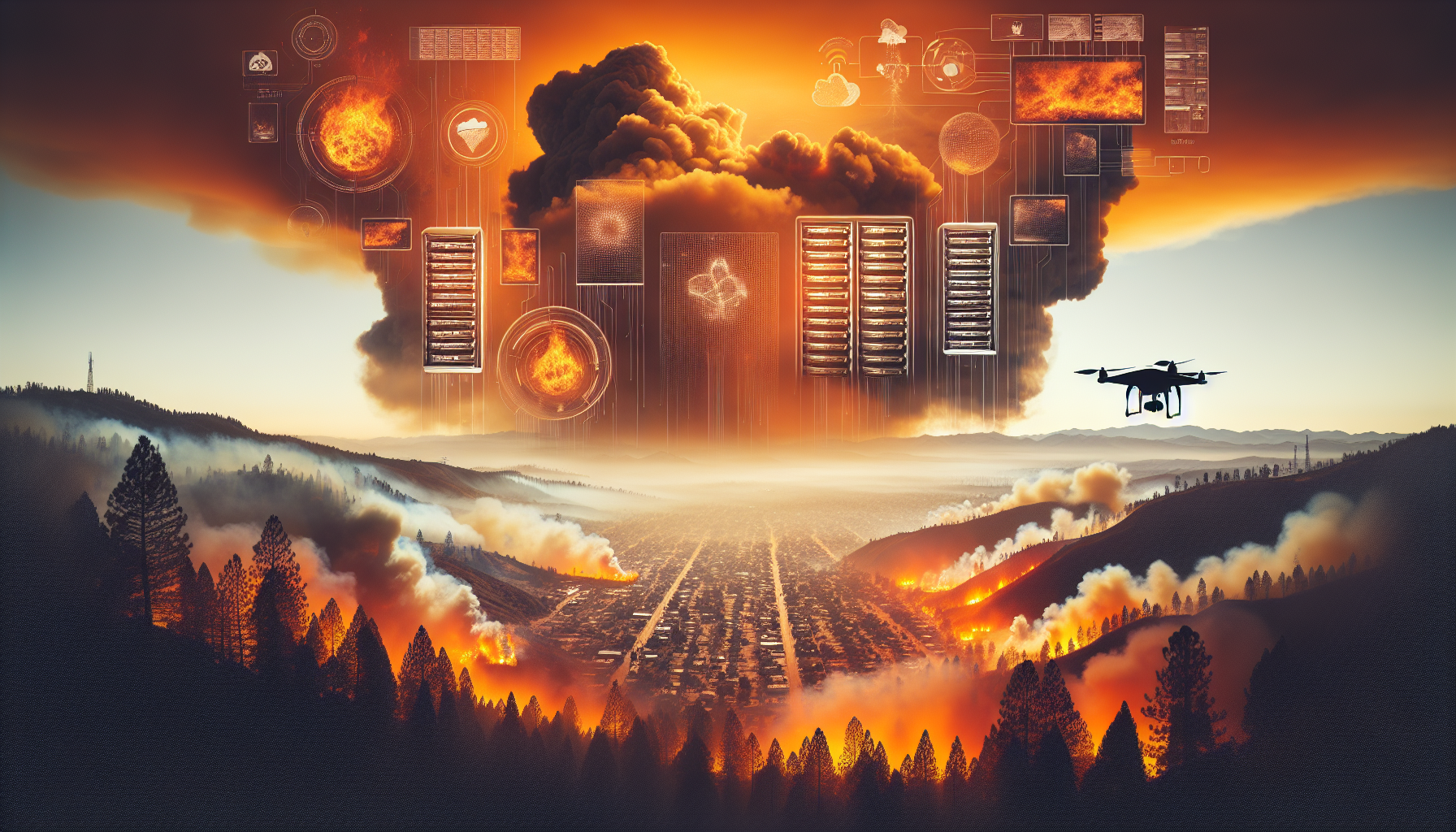
Beyond the Smoke: How AI and Cloud Tech Are Becoming Our First Responders to Wildfires
We’ve all seen the images that have become an unsettling part of our modern summers: skies glowing an apocalyptic orange, entire communities shrouded in smoke, and the heartbreaking aftermath of homes reduced to ash. Wildfires are growing in frequency and intensity, and for a long time, our response has been reactive. We wait for the 911 call, the smoke report from a lone watchtower, or a pilot spotting a plume from the air. By then, a small, manageable fire can already be an unstoppable monster.
But what if we could see the spark before it becomes a blaze? What if we could predict a fire’s path with terrifying accuracy, deploying resources not just to fight it, but to get ahead of it? This isn’t science fiction. This is the new reality being built by a fusion of brilliant minds in tech and grizzled veterans in firefighting. A new generation of digital first responders—powered by artificial intelligence, the cloud, and relentless innovation—is changing the way we fight fire.
The Old Guard vs. The New Digital Watchtower
For over a century, the primary tool for early wildfire detection was a pair of human eyes. A dedicated soul in a remote fire tower, scanning the horizon with binoculars. It was a system built on diligence and patience, but it was inherently limited by line of sight, weather conditions, and human endurance. A fire starting in a remote canyon or on the other side of a ridge could go unnoticed for hours.
Today, that watchtower is being digitized and scaled to planetary levels. Instead of one person, we have thousands of “eyes” that never sleep, never blink, and can see through the haze.
Enter Artificial Intelligence: The All-Seeing Eye
At the heart of this revolution is AI. Specifically, machine learning models are being trained on colossal datasets to do one thing better than any human ever could: spot trouble, fast. Here’s how it works:
- Computer Vision: Strategically placed, high-definition cameras on mountaintops and cell towers are constantly scanning the landscape. An AI model, trained on millions of images of both benign phenomena (dust, fog, clouds) and real smoke plumes, analyzes this feed 24/7. The moment it detects the faintest wisp of smoke, it can trigger an alert, pinpointing the exact coordinates in seconds—not hours. This is automation at its most critical.
- Predictive Analytics: This is where machine learning gets truly proactive. By feeding models historical fire data, real-time weather conditions (wind speed, humidity, temperature), topographical maps, and vegetation fuel levels, these systems can run thousands of simulations per second. They don’t just show where a fire is; they predict where it’s going. This allows incident commanders to evacuate the right communities and stage resources in the fire’s future path. The complex programming behind these algorithms is saving lives and property.
The Cloud: The Unsung Hero of Scalability
This fire-fighting intelligence needs a home, and that home is the cloud. Processing petabytes of satellite imagery, real-time video feeds, and sensor data from across a state or even a continent is an immense computational task. No local fire department could build or maintain the server farms required for this job.
This is where cloud platforms like AWS, Google Cloud, and Azure become critical infrastructure. They provide the on-demand processing power and storage needed to run these sophisticated AI models at scale. This has also given rise to a new business model that is accelerating adoption: SaaS (Software as a Service).
Instead of a multi-million dollar capital investment, fire agencies can now subscribe to a service. This SaaS model democratizes access to cutting-edge technology, allowing smaller, rural departments to benefit from the same predictive power as a major state agency. It’s a game-changer for resource allocation and inter-agency collaboration.
The Startup Ecosystem: Fanning the Flames of Innovation
Where there’s a massive problem and a technological solution, you’ll find startups. A vibrant ecosystem of tech companies is emerging, founded by entrepreneurs, data scientists, and even former firefighters who saw a better way.
Companies like Pano AI and Salo Sciences are deploying networks of AI-monitored cameras, while firms like Descartes Labs leverage satellite data to provide macro-level insights into forest health


